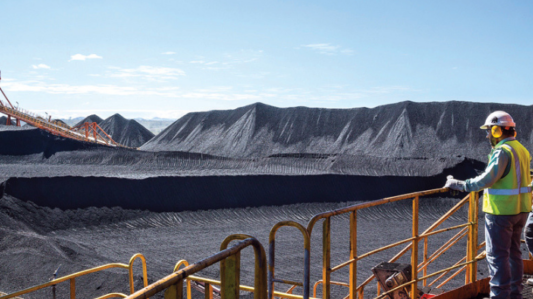Vale expects stronger iron ore sales in fourth quarter

Vale has recovered its iron ore inventories in the third quarter and will reduce the gap between production and sales in the coming months, potentially bringing relief to a tight global supply for the key steel-making ingredient, company executives said on a Thursday.
In a call with analysts on Vale’s quarterly results, Chief Executive Officer Eduardo Bartolomeo and executive director Marcello Spinelli said recovered inventories in China will give the producer more flexibility on sales going forward.
The move should help to stabilize the world’s supply and demand for the raw material, they said.
The world’s second largest iron ore producer increased production by 31% in the quarter compared with the previous three-month period. But it surprised the market by holding back part of its output to rebuild stocks, helping to push international iron ore prices to a six-year high in September.
Vale said it is in talks with trading firm Trafigura to sell its nickel and cobalt operations in New Caledonia
In the fourth quarter, Vale will further recover production lost after a Jan. 2019 dam burst near the town of Brumadinho.
Executives said the company is set to meet the lower end of its 310-330 million tonnes guidance for 2020, but with no room to accommodate unexpected events which could decrease production and sales, such as the possible impact of heavy rains resulting from the “La Niña” climate phenomenon, they said.
Future production by Vale, whose biggest market is China, will be sold instead of stored, meaning inventory stocks will be replenished at a considerably lower pace between 2021 and 2022, they said.
Iron ore future prices have eased in the past weeks with expectations that supply coming from Brazil and Australia, the world’s top iron ore producers, could recover in the coming months.
Vale said it is in talks with trading firm Trafigura to sell its nickel and cobalt operations in New Caledonia, in French Polynesia.
The Brazilian miner has been trying for years to sell the loss-making unit, which never reached full capacity and has a history of acid spills. Executives said Vale will carry out maintenance works in 2021 as it continues negotiations with potential buyers and union workers who oppose the sale, instead of shutting down the unit.
(By Sabrina Valle, Roberto Samora and Gram Slattery; Editing by Stephen Eisenhammer, Diane Craft and David Evans)
More News
Gold price slumps as traders mull rate outlook
Gold fell the most in a week as the dollar hit a multi-month high.
November 04, 2025 | 02:11 pm
{{ commodity.name }}
{{ post.title }}
{{ post.date }}




Comments